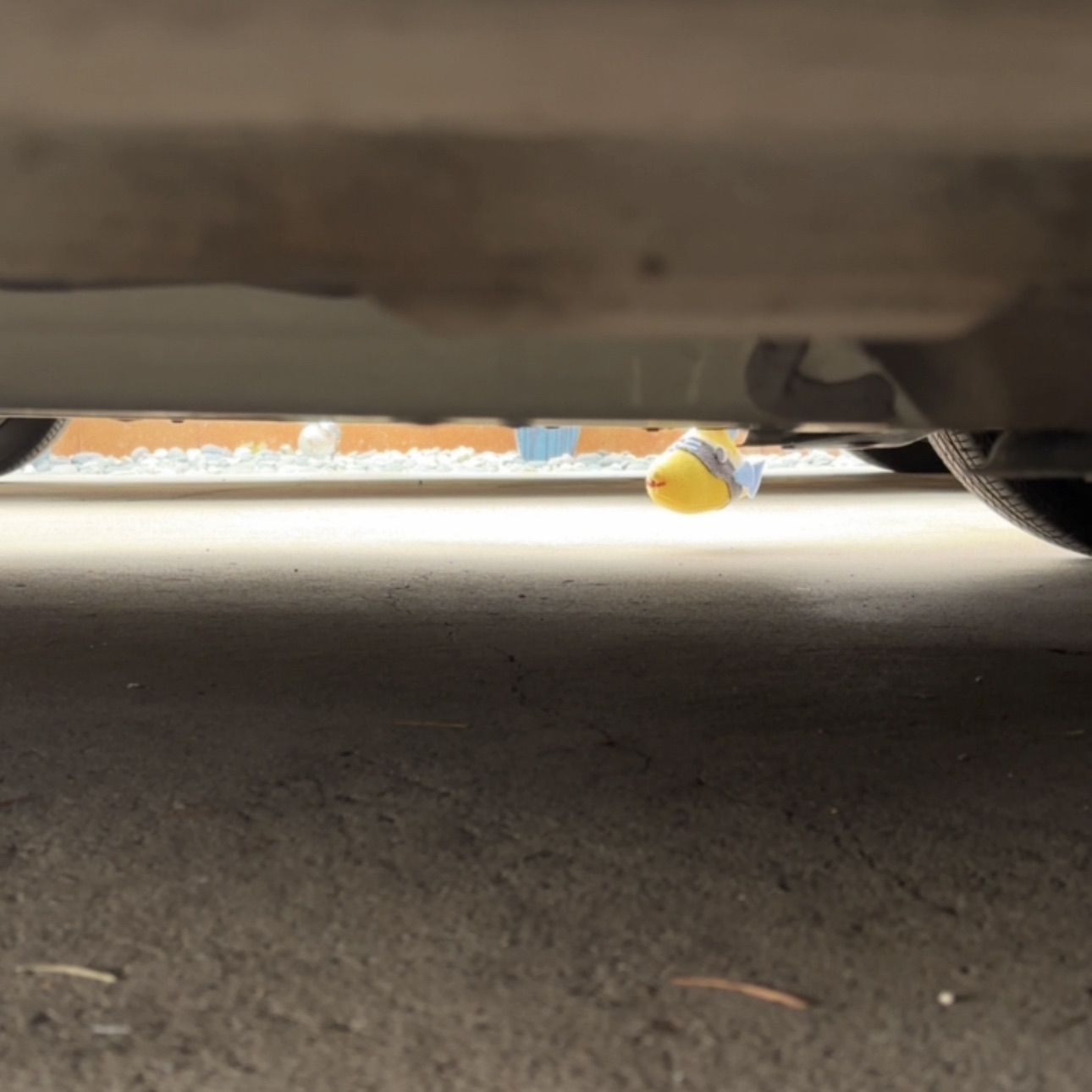Did you know that car maintenance can impact water quality? It’s true! Automotive fluids like oil and coolant – along with other pollutants like brake dust and microplastics – can leak from your car onto driveways and roadways, where they are picked up by storm water runoff when it rains, eventually flowing into the ocean through our storm drain system. These pollutants harm marine life, degrade water quality, and contribute to environmental damage.
The good news? Identifying and fixing leaks early can help protect our waters while keeping your car in good condition. Not only does regular maintenance help the environment, but it saves you money in the long run, too!
If you notice a leak, don’t wait – get it checked out as soon as possible. Here are the five steps to identify a leak:
- Look for spots or stains on your driveway, garage floor, or anywhere you typically park. Spots near the front of your car may tell you that you have some leaks in or around the engine. Spots at the rear of your car may tell you that you have some leaks near the fuel tank or real differential, for real wheel vehicles.
- Use a drip mat or cardboard. Place it under the car overnight to check for fluid color and location. This will also help you identify whether staining on the ground is old or from newer leaks.
- Check fluid levels. Sudden drops indicate a leak.
- Inspect hoses and seals. Look for cracks, damp spots, or build-up.
- Smell the fluid. Each kind of fluid has a distinct odor.
- Touch carefully. Identify the fluid’s texture, but be sure to wash your hands afterward.
Use this quick guide to help determine which fluid is leaking:
Engine Oil
Color: Brown or black
Feel: Oily, thick, slippery
Power Steering Fluid
Color: Pink or reddish brown
Feel: Oily, thinner than engine oil
Windshield Wiper Fluid
Color: Blue or green
Feel: Thin, watery
Brake Fluid
Color: Clear to yellow or brown
Feel: Oily, slicker than engine oil
Fuel
Color: Clear (additives can change the color)
Feel: Thin, watery
Transmission Fluid
Color: Pink to red or brown
Feel: Oily, thinner than engine oil
Coolant
Color: Green or yellow
Feel: Slimy
Differential Fluid
Color: golden yellow (new) or dark brown or black (old)
Feel: Thick and viscous (thicker than motor oil)
Keep in mind that any water underneath your car is likely due to condensation from the air conditioning or exhaust, rather than a leak that you need to address. Find more detailed information about common car leaks, what they mean, and the steps you can take to prevent pollution before it starts in our Car Leak Detection Guide. By fixing leaks promptly, you’ll keep our storm drains clear and our beaches clean. Remember – a well-maintained car is better for your wallet and our ocean!


